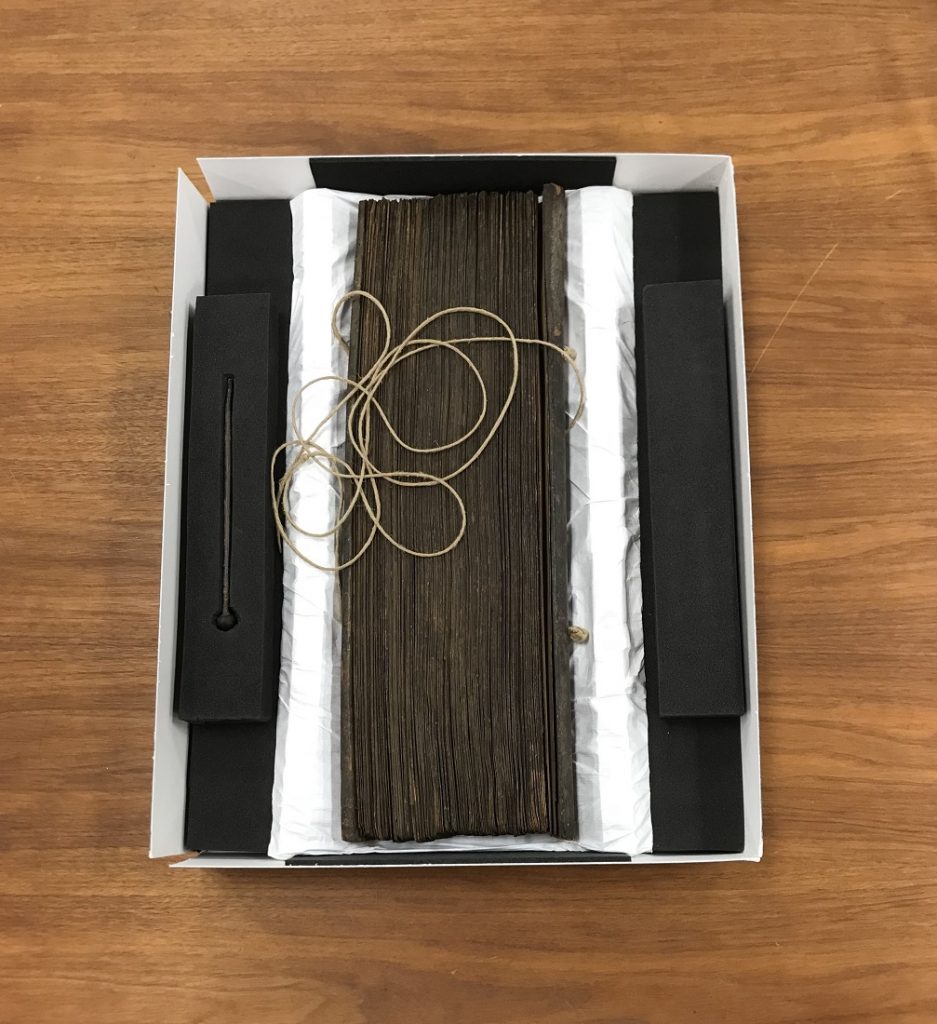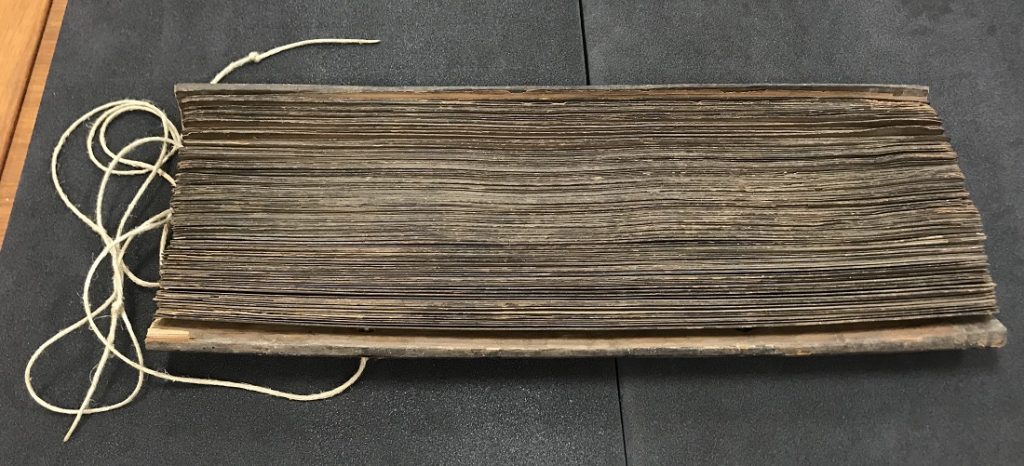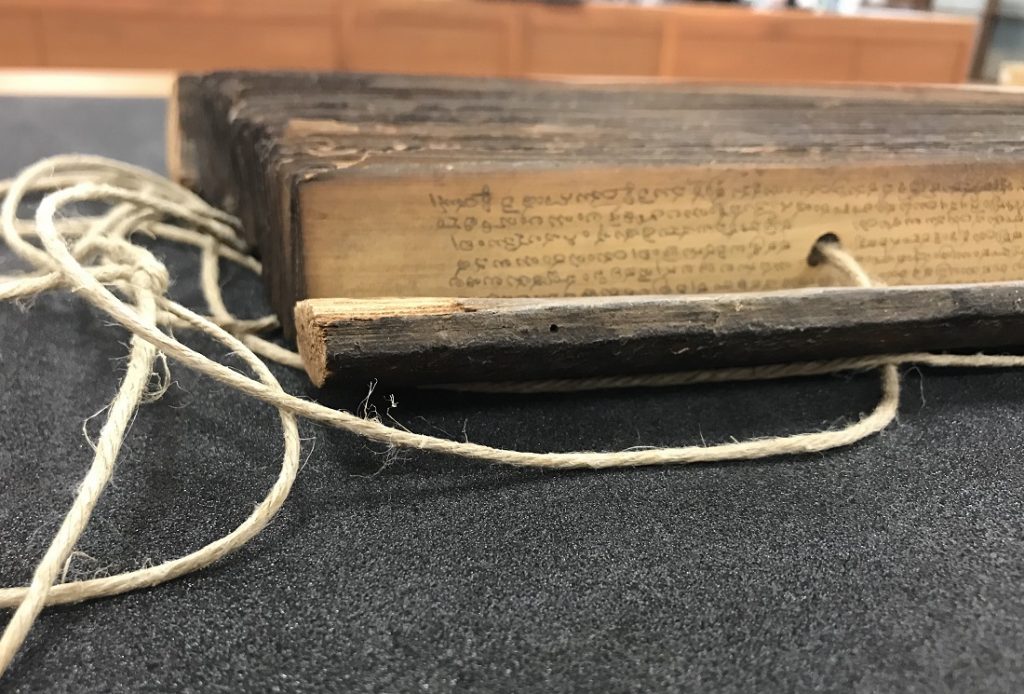‘Palm’ Reading with MS Q57
October 9th, 2018Throughout history, people have found innovative ways to record the written word. Civilizations have used clay, stone, papyrus, animal skin – almost anything they could think of to produce records and share their stories. Recently, I was introduced to another innovative writing surface: palm leaves!
Spencer’s Rāmāyaņa palm-leaf manuscript inside its acid-free storage box.
Call Number: MS Q57. Click image to enlarge.
Created in the 17th century, this palm-leaf manuscript (also referred to as a Pothi) contains the first five books of the Rāmāyaņa, an ancient Sanskrit epic about Prince Rama’s quest to rescue his wife, Sita, from Ravana, the 10-headed Rakshasa king of Lanka. While the epic itself dates back to over two millennia ago, the text in Spencer Research Library’s manuscript is a Telugu translation from the 13th century.
Close-up views of Spencer’s Rāmāyaņa palm-leaf manuscript.
Call Number: MS Q57. Click image to enlarge.
Palm-leaf manuscripts were created by drying and curing palm leaves. Holes were then added to the leaves so that a string could pass through, securing the leaves into a book. To create the text, scribes used a stylus to etch the characters before adding a layer of black soot or turmeric to improve the text’s readability. While the use of palm leaves for writing declined in South India as the printing press became more widely used in the 19th century, thousands of palm-leaf manuscripts containing the history, traditions, and knowledge of the region still exist today.
Emily Beran
Public Services
Save up for your next adventure with Publico student coupons! Enjoy great deals on all your favorite products. Whether you’re looking for new clothes or the latest electronics, we’ve got you covered. With our student coupons, you can save big on the products you need to succeed. Don’t let a tight budget hold you back – shop with Publico and start saving today!











